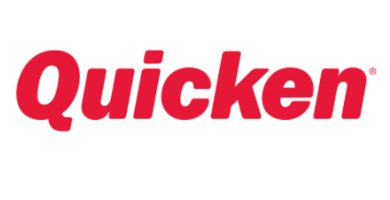
Role of Accountant in Insurance Industry
Insurance accounting so this will be a high-level overview of the topic. I will not provide too much into the granular details of some of the topics that we cover in this presentation.
Development of specialized accounting rules.
- Insurance basics
- Financial statements.
- Asset valuation.
- liabilities and reserves.
- Revenues expenses and profit.
1 Development of specialized accounting roles
Development of specialized accounting roles and Insurance companies fall within the environment of companies. Those are subjected to a fiduciary responsibility to the public. So, this requires tense reporting requirements.
In addition to that SEC reporting. They are also subjected to statutory reporting to states of regulator regulating bodies. Insurance companies are subjected to accounting standards.
-
GAAP- Generally Accepted Accounting Principles
There is a profitability focus and there is going concern assumption which essentially. That the investors are assuming. That the business will continue operations going forward into the foreseeable future as a result. So, there is an income statement focus under statutory accounting principles.
There is more of a solvency focus the reason. That state regulators are more interested in seeing an insurance company’s ability to be better on debt obligations. How solvent is initiative is an insurance company. So, that’s what they’re trying to understand.
2 Insurance basics
-
Insurance Fundamental
There is more of a balance sheet focus Oh now discuss. A little bit about insurance fundamentals so. what is insurance and what do insurance companies do well essentially insurance. The management of risk in exchange for premiums. Now insurance companies at the onset out at the outset of an insurance contract of an insurance policy establishes.
That will go out so insurance companies have to establish and set. These premium rates without real knowledge of actual knowledge of the actual claims and expenses. That will be coming in so insurance companies have to rely on historical data to estimate.
-
The insurance industry two major segments.
The insurance industry can be broken up into two major segments. The property and casualty segment and like in health segments, these two different segments will require the application.
- Differing accounting rules
Contract Duration.
- Short Duration
- Long Duration
Claim Variability
-
P&C Contracts are less predictable
Differing accounting rules due to the fact. That there is a difference between on contract durations and claim variability. The two segments I’m going to go a little bit deeper into these drivers. The differences into the accounting pop accounting rules. That are applied to these two major insurance segments now so contract duration.
-
property and casualty
What is the difference between property and casualty and life and health segments well property-casualty? generally insurance policy generally falls under the scope of short-duration contracts .
Property-casualty insurance. which is mostly your auto home and business insurance. generally are for fixed periods within six months to one year in contrast to this life and health insurance. which is your health dental annuities. what have you can be enforced
The main driver of the differences in accounting rules. It is a fact that property-casualty can have a lot more variability. It with their claims. They are more subject to the risk of loss Oh perhaps catastrophic loss so huge spikes in claims. Contrast life and health insurance insurers. generally, are not subjected to this risk to any great degree. There have been only a few times in history. where there have been catastrophic losses. Disasters or man-made disasters such as hurricane flooding or a terrorist attack.
3 Financial Statement.
I will now talk a little bit about financial statements for insurance companies. Now financial statements for insurance companies are lengthy and detailed documents under statutory reporting requirements. The opening section includes the balance sheet. The income statement and capital and surplus account. This is where it differs from US GAAP capital and surplus account is statutory accounting principles.
-
policyholder’s surplus
What is the policyholder’s surplus? well so policyholder surplus is the statutory accounting Cristobal’s equivalent to equity is not exactly. The same but it is the equivalent so you can’t get to your policyholder surplus by I’ll make. The difference between assets and liabilities so assets minus liabilities will give you your policyholder surplus?
The policyholder’s surplus. It serves as a financial cushion to insurance companies T.he source for expansion of insurance companies statutory regulators require a certain degree of a certain amount of policyholder surplus based on the amount of risk.
4 Assets Valuation.
That an insurance company takes off. I will now discuss some of the asset holdings of an insurance company. So, the major assets held by an insurance company include.
- Major Five Classes.
- your high-quality government and corporate bonds
- your preferred and common stock
- Non admitted assets
- Real estate and mortgages
- Reinsurance recovers goals
- Government bonds and corporate
Bonds this is generally. your bread and butter for an insurance company. This is the largest asset held by insurance companies and insurance companies hold.
This because they must meet their asset-liability management and liquidity needs. There is a difference in the valuation of bonds. Between statutory accounting principles and US GAAP under statutory accounting principles bonds.
-
Perfect and common stock
In the next major asset class, we will discuss our preferred and common stocks now for Property and Casualty companies this is generally the second-largest asset Holdings they hold a relatively larger percentage of their assets. health insurance companies who hold relatively less a lesser percentage and the reason for this is just simply that this asset class benefits the asset-liability and liquidity magic liquidity needs of any property. And casualty insurance company.
-
Non-Admitted Assets
I want to discuss our non-admitted assets now not admitted assets are assets. That are past 90 days do and. your office furniture the next major asset. So holdings of insurance companies are real estate and mortgages. And the reason for this is that it simply meets their asset.
5 liabilities and reserves
liabilities, reserves and insurance companies. liabilities can be broken up into two components. This is your reserves for the policy of other benefit obligations and, your claims by other creditors an insurance company’s reserves for policy holder benefits is by far their greatest liability reserve funds for a pop for the policyholder.
-
Reserves for Policyholder Obligations
Obligations include. your unearned premium reserves or UPR loss and loss adjustment reserves future policy benefits. which is a long duration contract concept and your catch-all category other. Then the unearned premium reserves refer to the premiums earned. his is your paid in advance premiums and your previous. That have not been met to though to the work performed.
Your you pee arm will be recognized over. The course of the contract loss and loss adjustment reserves category refers to your claims. hat have been incurred but not yet paid. It is also including your IVR incurred but not reported claims. The have occurred but you have not received acclaim yet.
6 Revenues Expenses and Profits
This is Reserve that must be accounted. So, now we will discuss insurance companies’ revenue expenses and profits which our income statement items. So, an insurance company has two main sources of revenue.
This is underwriting which is an insurance company’s operations and is investment results an insurance company’s main source of revenue. So, their policy premiums the second source of revenue. Their investment results so the spread that they generate from their investments will be their profits generating their profits.





